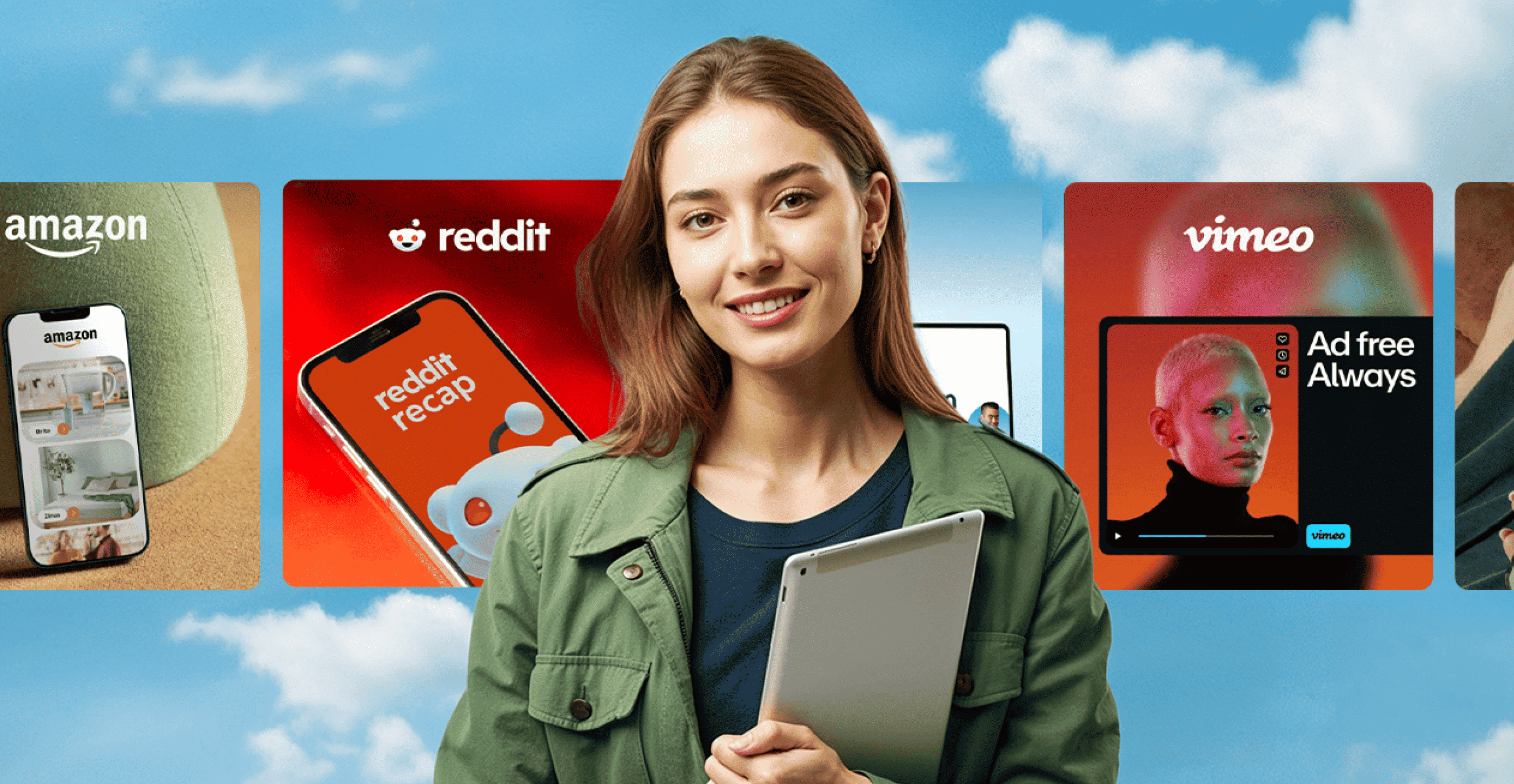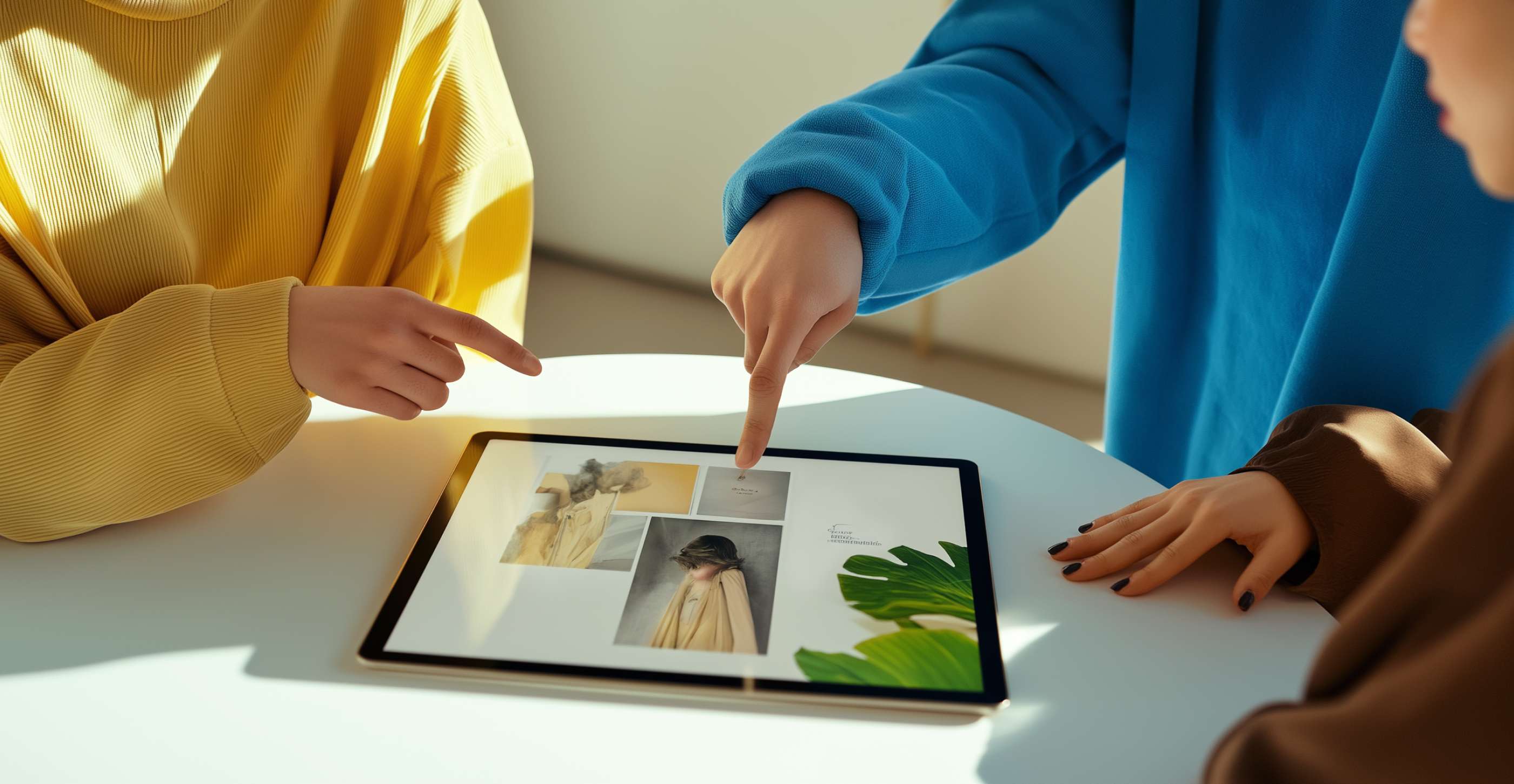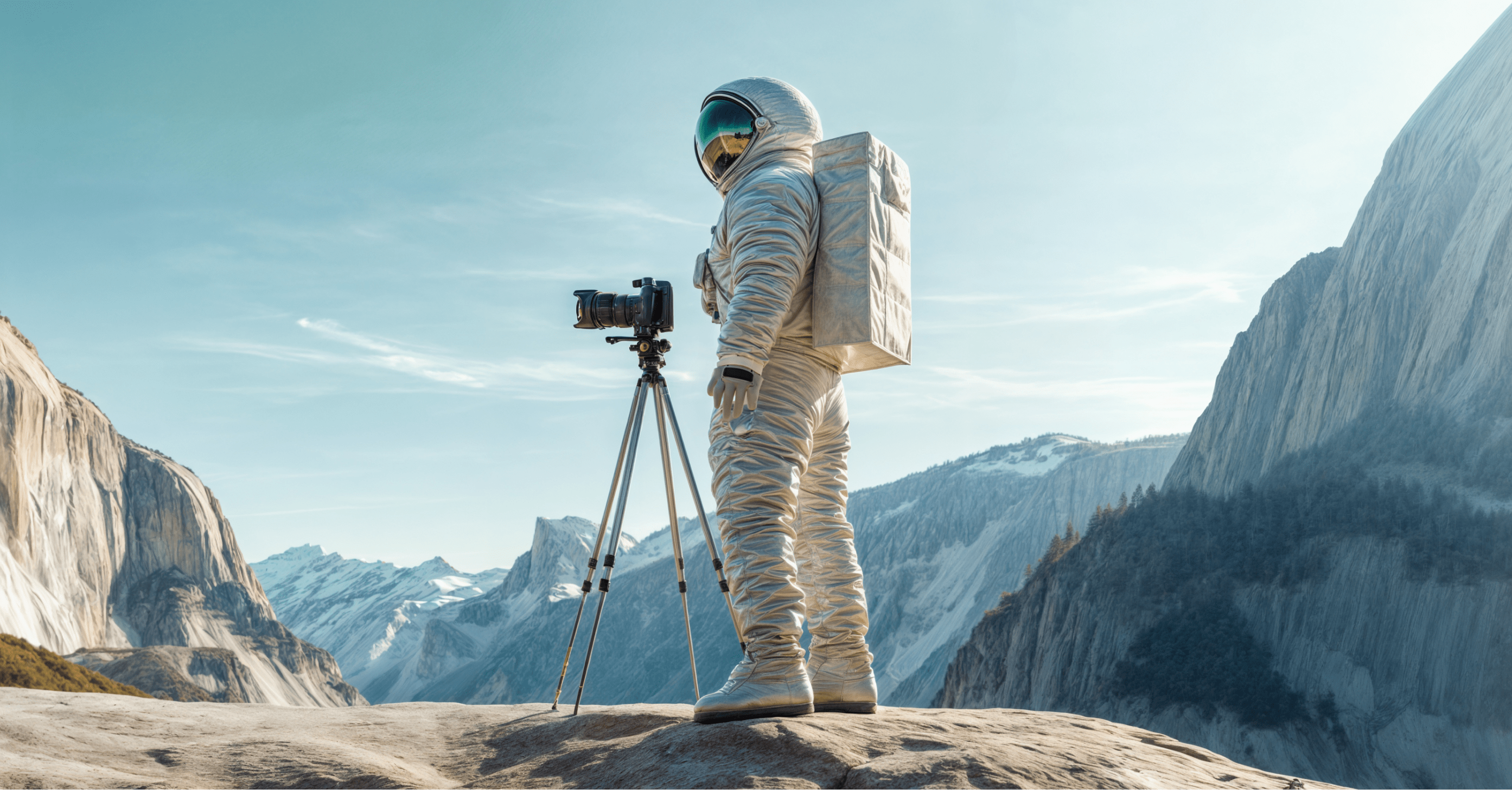Top 10 Design Trends For 2022 You Don't Want To Miss


Design trends aren’t just about what’s in or out—they show us what people crave or reject. They provide us with insights into our designs now and how we might prepare in the future.
Below, we’re sharing our curated list of the greatest design trends of 2022 that will continue to evolve throughout the year. If you’d rather watch, click the play button on the video or keep reading to get our take on what’s in vogue in the design world.
In no particular order, here are the top design trends for 2022 for consideration in your business designs.
- 3D Design
- Metaverse
- NFTs
- Motion Design
- Anti-design
- Maximalism
- Minimalism
- Diversity & inclusion
- Color Trends
- Typography Trends
1. 3D Design Trend
More designers are leveraging 3D tools to produce attention-grabbing creative. You can display 3D content on a flat-screen thanks to software programs like Blender, Cinema4D, Maya, and even game engines like Unity and Unreal Engine.
Tools like Unreal Engine are free for design projects making it more accessible and much easier for designers to deliver 3D designs (once they know how to use the tool).
Designers are embracing the 3D trend in many different ways, including:
- Blending 2D and 3D elements
- 3D typography (kinetic type)
- Hyper-realistic 3D designs
2. The Metaverse Influence
The 3D design trend is ramping up quicker than ever, perhaps stemming from a more significant movement: the metaverse.
The boundaries of our physical and digital lives are becoming increasingly blurred. Even if you’re metaverse-averse, it’s hard to deny this trend—especially when Meta (né Facebook) is spending millions on building its own.
So what is the metaverse, exactly? It’s the proposed future of the internet, where instead of looking at a screen, we would be inside of it with the help of virtual and augmented reality headsets.
This development means that designs will become more spatialized. Whether creating 2D billboards that live in the metaverse or designing pixelated Chanel handbags, designers must consider how users will interact with their work, not just view it.
The metaverse aesthetic is creeping into the mainstream with 90’s cyberspace-type designs that embody that retrofuturistic look.
Trippy and surrealistic designs also reflect the strange, out-of-body experience of interacting with this new technology.
Lastly, bright, liquid gradients are having a moment. Many metaverse and crypto companies use this aesthetic to show off their hyper-modernism and attract eyeballs with this candy-like design.
3. The Era Of NFTs
You can't mention the metaverse without blurting out these three letters: NFT.
If you somehow made it out of 2021 without hearing the word “NFT,” you must have either been living under a rock or “going all-in on LinkedIn” and missed all of the hype on Twitter because these things are taking over the world.
We won’t go into depth on what an NFT or Non-Fungible Token is—you can check out our blog post on NFTs to learn more—but blockchain-based crypto art is changing the art and design world as we know it.
Digital artists like Beeple are now among the most valuable living artists. In addition, NFT projects like CryptoPunks and Bored Ape Yacht Club are taking the world by storm, opening up entirely new possibilities for brands, businesses and designers.
Legacy brands like Disney, Marvel, Adidas and Nike are all bringing their designs into the metaverse and allowing people to own a one-of-a-kind design in a way that wasn’t possible before the existence of NFTs. Expect many more brands to follow suit.
4. Motion Design And Animation Trends
We know—this one comes up a lot. But there’s a good reason for that. Adding motion to your designs will make them stand out, so more designs will be animated this year.
READ: How to use motion graphics in your marketing
Fewer people will click on an ad or engage with a post that doesn’t move anymore. Not only that, but with the advent of Lottie files (kilobyte-sized motion graphics), we’re seeing motion make its way onto websites, emails, and more.
5. Anti-Design Trend
Remember that girl that went viral on TikTok by turning great logos into something your 6-year-old nephew could have made? Well, she may have started a whole new trend: anti-design.
It’s kind of like the black sheep of 2022 design trends. Designers are rebelling against all the fundamental design rules to make something unique, including lots of stretched elements and broken grids.
The key to nailing this trend is making sure your anti-design work looks intentional—not lacking in skill. You need to make bold choices and execute them with a sense of humor and clarity, so your audience knows you’re in on the joke.
6. Maximalism Design Trend
Less brutal than anti-design, Maximalism is all about being bold, colorful and cramming as much as possible into a given space (visual overlod). The mantra here is more is more.
This trend makes a lot of sense in the wake of the pandemic. Lockdown life was monotonous, and after months spent indoors, we’re all craving a little excitement? While minimalism takes a more measured approach, maximalism involves experimentation with conflicting themes, textures and patterns.
Maximalism uses multiple fonts, saturated hues, and very little negative space. It’s not for the faint of heart, but it can be an excellent choice for modern, irreverent and youthful brands.
7. Minimalism Trend
In the complete opposite direction to anti-design and maximalism, are minimal designs that accentuate simplicity. This trend is already popular with consumer brands who want their product design and imagery to match the simplicity of their logos.
While simple logos are often more recognizable, it’s starting to look like every chip brand in the world is trying to look like a tech company, and every tech company is trying to start a religion.
8. Diversity and Inclusion In Design
From the 2008 Obama campaign to Black Lives Matter, design has always been a medium for promoting societal change. But now, companies of all sizes are embracing diversity in their ads and imagery and in turn are proving the business advantages of having a diverse team.
The world is inherently diverse, so designing with diversity and inclusion in mind is more than a trending topic—it should be the default. The internet has made the world a smaller place, so why limit your audience to a particular group of people or make other groups feel excluded?
Brands should continue to use photography, illustrations, iconography, and stock footage that includes people from various experiences, backgrounds and identities.
Brands should be committed to promoting diversity, equity and inclusion within their workforce. For example, Superside is culturally diverse by design, with over 500 team members across 57 countries and 19 time zones, bringing their unique perspectives, experience and inspiration to the creative process.
9. Color Trends
Any article on design trends must mention color trends for the year.
The 2022 Pantone’s color of the year for 2022 is “Very Peri,” which sounds like a candy or a soda brand but is essentially the color periwinkle. Many designers will likely use the color to stay trendy.
In general, more designers are embracing calming colors. Given the state of the world today, we can all use a little more calm in our lives. However, this trend could also be in response to some of the more intense colors and designs that we’re seeing in the bright metaverse and anti-design aesthetics.
Aside from Very Peri, you'll also see muted color palettes as designers embrace dreamy, muted color gradients with grainy textures. This color story creates a more organic daydream vibe than the more chaotic and trippy metaverse designs.
10. Typography Trends
And lastly, we couldn’t end this post without talking about some typography trends beyond animated and kinetic type.
The first is wide, thick fonts, often with an outlined or stroked version. These thick typefaces command instant attention and add boldness to the design.
The second is more serif and display fonts—the curlier, the better. It also seems like many brands are living out their glory days with thick curving letters that look like they’re straight out of the seventies. Retro fonts are always cool, but these display fonts look straight-up groovy.
Lastly, similar to the display fonts, this Arts and Crafts revival look is showing up everywhere, and each of them is as unique as the brands that use them.
How To Maximize These Design Trends for your business
Whether you’re a designer yourself, or a creative leader, remember: these are just trends. Don’t design your creative brief around them just to be trendy.
At Superside, instead of thinking of the latest trends first and the designs second, our designers look at the brief, research and brand guidelines. Then our designers see if it makes sense to use some trends to make the design relevant and stand out.
Often, a design trend won’t fit a brand guide or sends the wrong message to the established audience. But sometimes, you can use them to help reach new audiences. For example, if you’re trying to reach a Gen-Z audience, you might ride the retro nostalgia wave and embrace an early 2000s technology aesthetic in your designs.
Either way, use these trends as a pulse to gauge the year ahead. Often, combining multiple trends or masking up one of these new trends like an old trend can bring about a fresh new design that will stand out in 2022. Who knows, you might even accidentally create a whole new trend yourself.
Alternatively, reach out to us at Superside, our range of graphic design services has your needs covered.
You may also like these

25 best multichannel brand campaigns in 2025 for inspiration
The evidence is clear: Multichannel marketing works.In fact, recent research reveals that 95% of marketers believe that integrating multiple marketing channels in ad campaigns improves audience targeting, according to industry. Companies with strong multichannel marketing campaigns experience a 9.5% rise in annual revenue and 91% higher customer retention rates.With so many top campaigns and great ideas out there, you might be wondering what can work best for your business this year, based on marketing goals, your industry and who's able to scale as much as you need.A leading creative subscription service like Superside offers a powerful way to grow your business with speed and efficiency, as we have done with top brands and enterprises for years now.Of course, taking inspiration from others is a wise place to start. Work through this curated list of creative ad campaign examples to find ideas for your next campaign.
13 principles of design: A visual guide from Superside (2025)
Design is everywhere. It influences everything from our pyjamas to our jeans, from our cities’ layouts to our homes.But what makes a design “good?” Why do some designs attract us while others make us feel queasy? Is there a science behind the art, or is it just intuition?If you’re facing a design quandary, this comprehensive guide for enterprise design teams will give you a deeper understanding of design principles. Ultimately, it can help you enhance and elevate your visual communication, branding and marketing strategies.We cover the elements and principles of design, and include clear graphic design examples to illustrate these concepts.Grab that coffee. It’s time for a design deep dive.
15 Corporate Presentation Design Ideas & Services for 2025
Compelling presentations are deal-makers: They captivate audiences and drive decisive outcomes.In fact, the visual storytelling research is pretty convincing. 85% of people remember what they observed in a presentation three hours later, compared to 70% who recall what they heard. After three days, 60% remember the images, but only 10% remember the spoken content.Your presentations must be first-rate. They should simplify complex ideas, showcase information in an easy-to-grasp way, and tell persuasive stories.As an industry leader in corporate presentation design, Superside combines innovative tools, creative expertise and strategic thinking to craft professional visual stories for customers worldwide.You'll find the info on this page invaluable if you’re looking for the best enterprise presentation design service. Superside’s team shares a few killer corporate presentation design ideas to help you lift your game.






